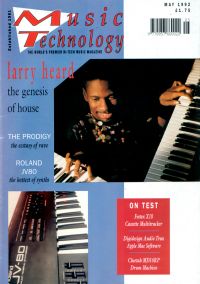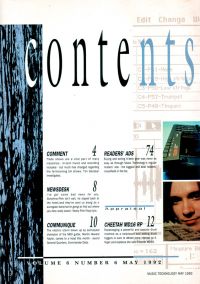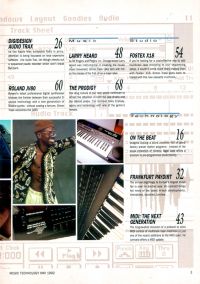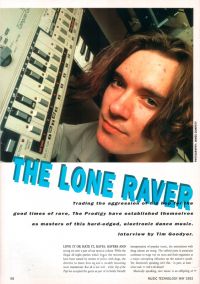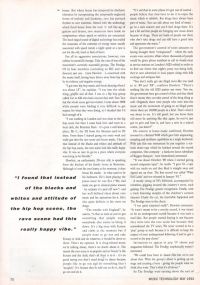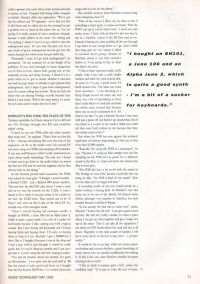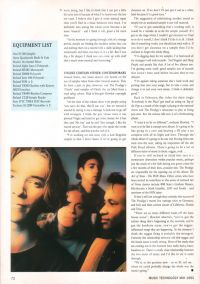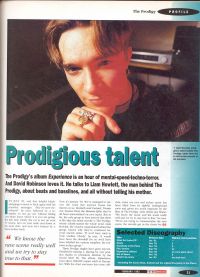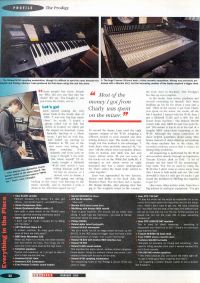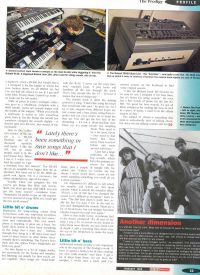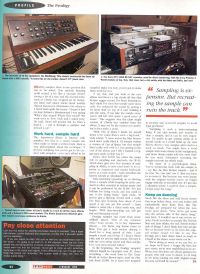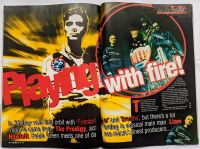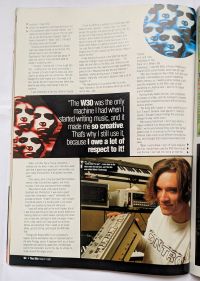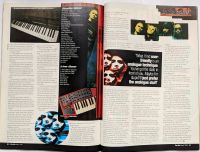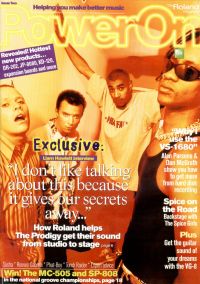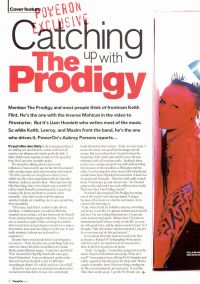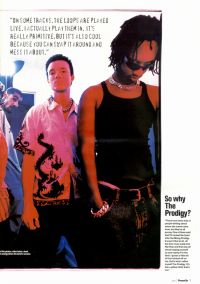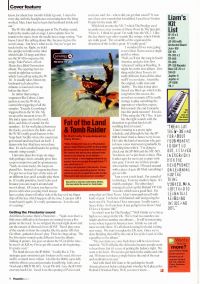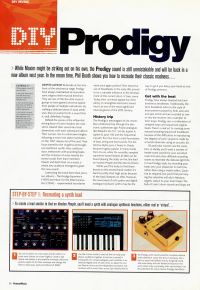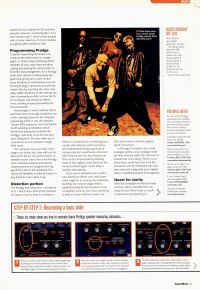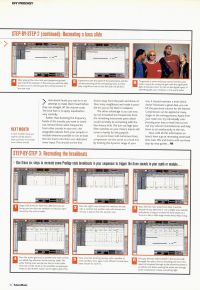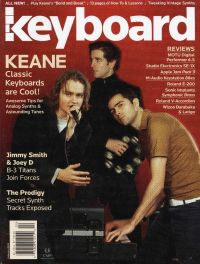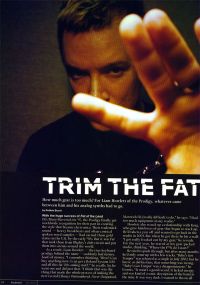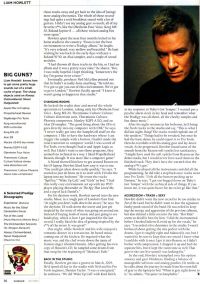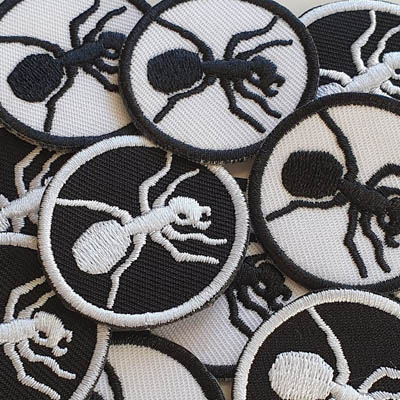Equipment
Liam Howlett’s synths and gear in studio and live.

Roland JD-990
The Roland JD-990 is a digital synthesizer that was first released in 1993 by Roland Corporation. It is a member of the JD (Super JD) series of synthesizers, which are known for their powerful sound generation capabilities and advanced features.
One of the most notable features of the JD-990 is its use of Roland's "Super LA" synthesis engine, which is capable of producing a wide range of sounds, from classic analog-style synth leads and basses to complex, evolving textures. The synth also has a built-in multi-effects processor, which allows users to add reverb, delay, and other effects to their sounds. Additionally, the JD-990 has a programmable memory that can store up to 256 different patches, making it easy for users to recall their favorite sounds and settings.
The JD-990 is a four-part multitimbral synthesizer, which means that it can produce four different sounds simultaneously. It has four stereo output pairs, allowing for a greater flexibility in sound shaping. It also has a powerful arpeggiator, which allows users to easily create complex, rhythmically interesting patterns. Additionally, the JD-990 has a built-in LFO (Low-Frequency Oscillator) that can be used to create a wide range of modulation effects, such as vibrato and tremolo.
The JD-990's voice architecture includes "analog-like" parameters such as ring modulation, Frequency Cross Modulation (FXM) and oscillator sync. The JD-990 also incorporates 'structures' and can use any expansion boards or PCM cards created for the JV80 or JD800. Additional features include 6MB or ROM waveform data (expandable to 16MB) 24 voice polyphony and 8 part multitimbral capability 320x80 dot backlit LCD display 8 outputs configured as four stereo pairs and 2 space rack mount design. An on-board multiple effects processor can be used in both single or multi-timbral modes. A special super synth part can use up to 8 effects simultaneously, while other parts can use reverb, chorus and delay.
The JD-990 is relatively easy to use, even for users who are new to synthesis. The synth's front panel features a clear layout and intuitive controls, which makes it easy to adjust the parameters of the various sound-generating and modulation modules. Additionally, the JD-990 includes a built-in MIDI interface, which allows users to connect it to other MIDI-enabled devices, such as drum machines, sequencers, and computers.
The JD-990 is a versatile synth that can be used to create a wide range of sounds, from classic analog-style basses and leads to more experimental, electronic textures. Its arpeggiator and programmable memory make it ideal for electronic and dance music production, but it can also be used to create sounds for other genres such as rock, pop and R&B. The JD-990 can also act as a sound module, allowing the user to play its sounds through a MIDI controller.
The JD-990 is a powerful synth that is still widely used today, particularly in electronic and dance music production. Its "Super LA" synthesis engine and programmable memory make it a great option for musicians and producers who are looking for a versatile and powerful synth with advanced features. The JD-990's multitimbral capabilities, arpeggiator and multi-effects processor make it a great tool for live performances and a powerful addition to any studio setup.
About:
One of Liam's main sound sources for strings and stuff.
Used:
Liam uses this synth for almost every track in Jilted Genration album, and it can be heard at the beginning of Poison.
It was also used to the main riff on Voodoo People. There is also a preset sound called "EML Wobbler" that is used in ending of 3 Kilos.
Poison (the opening riff)
Voodoo People (the main riff)
Liam's quotes:
"A year after selling my JD800, I did buy the JD990, which I think is really good. I've got all the expansion boards for it, but I don't use many of the analogue sounds off the vintage board -- it's mainly used for textures and strings. It's got a good distorted guitar, too. "
"I use the JD-990 on every track I do. I used it on the opening of Poison and everyone said 'Aw - where did you get that sound?' It was one of my own sounds that I modified. I used it on Voodoo People for the main riff."
Roland related articles
01 May 1992 The Music Technology Magazine
The Lone Raver
01 Feb 1993 Future Music
Prodigious talent
01 Oct 1996 Sound On Sound
Liam Howlett • The Prodigy & Firestarter
01 Mar 1997 The Mix
Playing with fire!
01 Jan 1999 Power On
Catching Up With The Prodigy
01 Dec 2000 Future Music
DIY Prodigy
01 Oct 2004 Sound On Sound
Liam Howlett: Recording Always Outnumbered, Never Outgunned
29 Nov 2004 Korg magazine
Never Outgunned: Liam Howlett
01 Feb 2005 Keyboard Magazine
Trim the Fat
01 Oct 2010 Sound On Sound
Jon Burton: Mixing & Recording The Prodigy Live
18 May 2015 MusicTech magazine
Landmark Productions: The Prodigy – The Fat of the Land
02 Nov 2018 The Guardian
The Prodigy: No Tourists review – music for the jaded generation
30 Jul 2019 MusicTech magazine
Prodigy engineer/co-producer Neil Mclellan remembers the Jilted Generation sessions
If you know something else about this piece of gear, please mail to me or contact me via feedback form.
The Prodigy 34 pcs sticker set
Big set of The Prodigy stickers. 17 different designs (2 of each) and total of 30 stickers. Sticker sizes vary from 9 cm to 3,5 cm. Order here >
